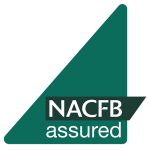By Matthew Dilks, Bridging and Commercial Specialist, Clever Lending.
For property investors looking to secure financing for development projects, it’s crucial to understand the distinctions between light, medium, and heavy refurbishment loans. However, there still seems to be quite a bit of confusion surrounding what qualifies as light or heavy refurbishment and what information is necessary to obtain funding.
The Significance of a Detailed Schedule of Works
Mistakes in applications for refurbishment finance are quite common, often leading to revaluation and resubmission, which can be time-consuming and add extra work for brokers and lenders. Dispelling this confusion is essential as it can help both brokers and investors gain a better grasp of lenders’ requirements, streamlining the application process.
In most cases, light refurbishment typically involves cosmetic updates to a property, such as plastering, painting, new flooring, or the replacement of fixtures and fittings like a new kitchen or bathroom.
This means that most lenders won’t approve structural work or projects requiring planning permission, permitted development, or building regulation approval for light refurbishment bridging loan applications. Such developments would be considered heavy refurbishment.
Challenges and Client Expectations
In many cases of light refurbishment, there’s a common misconception that if the client doesn’t need the lender to finance building costs, proof of funds for refurbishment expenses won’t be required. However, this isn’t the case. A comprehensive schedule of works is one of the most critical aspects for investors, whether it’s for light or heavy refurbishment financing.
Similarly, in many heavy refurbishment cases, clients often anticipate receiving a building quote based on rough, approximate figures for the works. However, once again, a detailed schedule of works is imperative.
This schedule should outline the work to be carried out, the cost of each element, the expected duration, and the inclusion of any contingency fund that can be utilised in case of delays or overspending during the project.
In heavy refurbishment scenarios, clients must ascertain the current site value, understand the refurbishment costs, and have realistic expectations regarding timelines, especially as lenders won’t finalise the loan until planning permission is granted.
One factor that isn’t always considered by applicants is that if building costs are high, the project involves extensive work compared to the original property, or if most of the property is being rebuilt, it will be classified as a full development. This results in higher rates, in line with the level of information required by the lender.
Another crucial aspect in all refurbishment finance cases is Gross Development Value (GDV). This aspect is often misunderstood, with clients if lenders will base the maximum day one loan on GDV rather than the current value at day one.
Understanding Gross Development Value (GDV)
It’s essential to grasp this distinction. GDV is calculated based on the prevailing market conditions at the valuation date, and it may also consider recent property transactions for similar properties around the development.
This calculation can include asking prices, sale prices, data provided by letting or estate agents, or assessments from development surveyors. It may also be part of an initial development appraisal and continuously assessed to determine the project’s profitability.
As with all bridging loans, having a solid exit strategy for refurbishment finance is critical, particularly in these economically challenging times. In some cases, having two exit strategies may be preferable to account for any unexpected changes.
Exit Fees, Valuations, and Inspection Fees
Lastly, keep in mind that most lenders typically charge an exit fee. In “full” development finance cases, costs such as rates, valuations, and quantity surveyor re-inspection fees will increase as the project progresses.
Therefore, it’s advisable for investors to aim for projects falling within the light to heavy refurbishment categories. This approach can result in reduced funding costs, shorter underwriting times, and a wider selection of lenders.




















